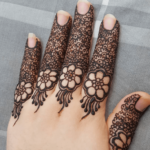Different parts of the ear can have piercings done to them, and these piercings come with varying degrees of appeal, healing timeframes, care requirements, and accessory alternatives. Before you make a final choice, we recommend that you consult both our ranked list of the top options for ear piercing as well as our detailed guide that explains everything you need to know about each option.
1. Helix Piercing
A helix piercing is often called a cartilage piercing because it is done on the cartilage around the helix of the ear. Different types of helix piercings are distinguished by where the holes are made on the ear. These include the forward helix, double helix, triple helix, and anti-helix (or snug) piercings. Other types of helix piercings include the triple helix.
Related: Everything you need to know about the Helix Piercing
2. Daith Piercing

Daith piercings, which are also known as ear cartilage fold piercings, are performed on the most interior part of the ear. In most cases, the cartilage of the ear is pierced at the point where it is the thickest. A daith piercing is when a hole is made in the cartilage of the ear through the crus of the helix. This is the cartilage fold that is the deepest. A straight, hollow needle is typically used when performing piercings. The captive bead ring is currently the most well-liked piece of jewelry in the world.
Related: Considering a Daith Piercing? Here’s What You Need to Know
3. Tragus Piercing
A piercing called a tragus piercing is made in the small bit of cartilage that hangs over the outside edge of the ear canal. A little hump that is located in front of the ear canal known as the tragus can have a hole bored through it so that jewelry can be worn and put there. Cartilage and skin make up the outermost layer of the ear.
Even though most people still choose to get their ears pierced in the fleshy lobe, cartilaginous spots like the tragus might be interesting alternatives or nice additions to ears that have already been pierced.
Related: Everything You Need to Know About Tragus Piercings
4. Conch Piercing

Because it is located in the part of the ear that is the widest and most accommodating, the conch piercing is one of the ear piercings that offers the greatest degree of versatility. When you make your request for this kind of ear piercing, you should give some thought to whether you want an inner or an exterior conch piercing.
When getting an inner conch piercing, a hole is made for a stud in the very center of the ear. This hole is known as the conch. Through the outer conch piercing, a ring can be put in and worn around the cartilage at the very tip of the ear.
Related: Conch Piercing 101: What to Know Before You Get Pierced
5. Rook Piercing
Piercings in the rook are produced in the region of the ear known as the antihelix, which is the tallest ridge of cartilage located behind the tragus. When obtaining a rook piercing, a hollow needle is used to puncture the cartilage of the ear in order to insert the jewelry.
Rook piercings have no health risks whatsoever, provided that a qualified expert performs the procedure in a sterile environment. The vast majority of people are able to get the piercing done, but a few individuals might discover that they are unable to get it done due to the distinctive architecture of their ears.
Related: Rook Piercing: Important Things To Know
6. Industrial Piercing

The term “industrial piercing,” which is also known as a “scaffold piercing” or a “construction piercing,” can be used to describe any two piercings that are joined by a single straight piece of jewelry; however, it is most commonly used to describe a double perforation of the upper ear cartilage. Other names for this type of piercing include “scaffold piercing,” “construction piercing,” and “industrial piercing.” An industrial piercing, as described by a piercer, consists of nothing more than two separate cartilage piercings on the upper ear, which are then connected by a straight barbell.
Related: The Complete Guide to Industrial Bar Piercings
7. High-Lobe Ear Piercing

A high-lobe piercing is one that is made further from the crux, which is the typical location for earlobe piercings, on the earlobe. You might be curious about whether or not it is possible to get a high lobe piercing done on top of an existing piercing, and whether or not it is preferable to have both piercings done at the same time from a positioning standpoint.
If you get your ear pierced higher up, it will be easier for people to see your piercing because it will be closer to the surface of your ear. This is the fatty tissue of the ear, which can be found just in front of the cartilage. This piercing location does not demand the level of commitment that cartilage piercings do, but it still gives you the ability to effortlessly create earring combinations that are distinctively you.
Related: Higher Lobe Piercing: Everything You Need to Know
8. Forward Helix Ear Piercing

A forward helix cartilage piercing is located on the top of the ear, beyond the tragus, in the concha region. It is more difficult than a standard helix piercing because the piercing needs to be aligned precisely with your ear, and it may cause more pain than a lobe piercing because of this alignment requirement. Depending on how experienced they are, your piercer may do the procedure with either a needle or a machine.
Related: What to Know Before Getting a Forward Helix Piercing



